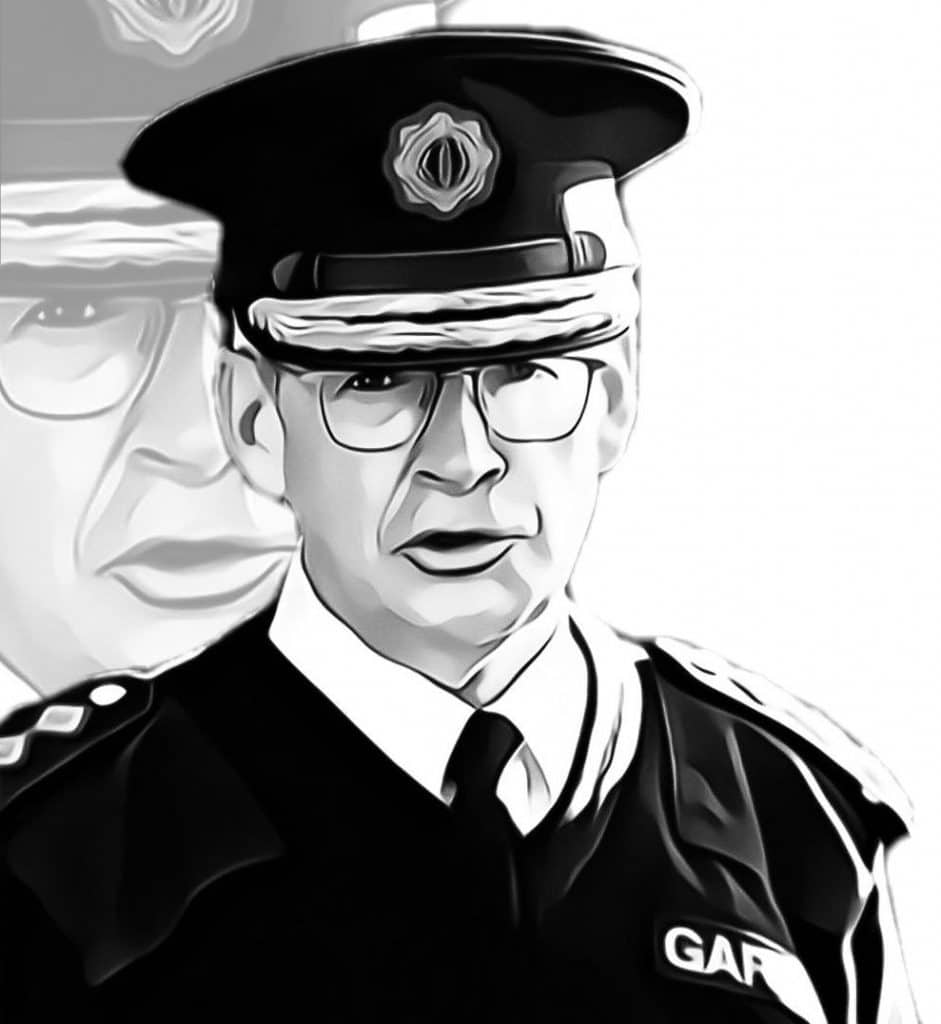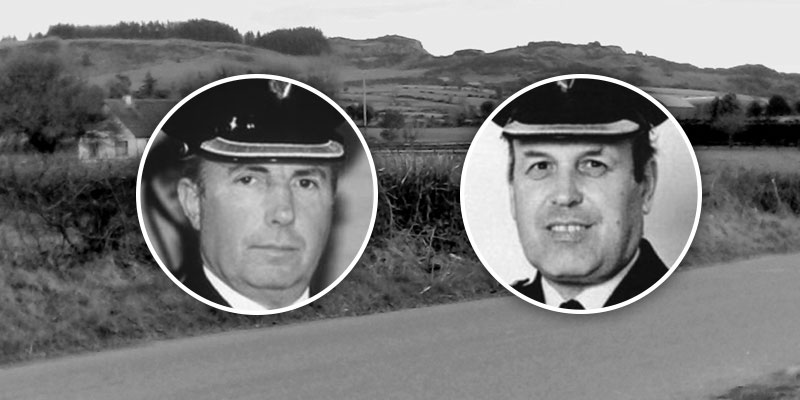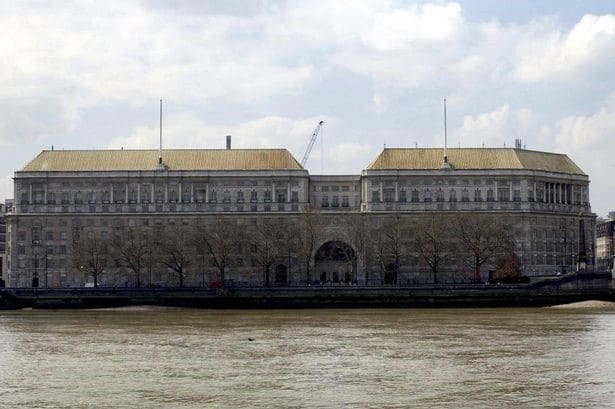As allegations continue to be made about the involvement of Robert Nairac in the Miami Showband massacre, how compromised is Garda Commissioner Harris who was PSNI liaison with Britain’s intelligence services?
By Deirdre Younge.
In the High Court in Belfast the British Government’s Ministry of Defence (MoD) and British Army are applying to have cases relating to the Dublin and Monaghan bombing atrocity of 1974 dismissed, alleging they are out of time. The bombings were carried out by the Glennane gang also known as the Portadown UVF who were also at the heart of an organisation that came into existence in the 1980s called Ulster Resistance. A recent BBC ‘Spotlight’ programme dealing with Ulster Resistance confirmed extensive collusion across the loyalist spectrum from DUP to UVF, UDA, UFF to MI5.

Members of Ulster Resistance (UR) became aware that some of its members were MI5 agents. The key MI5 agent inside UR was carved out of the distribution of the weapons it had procured in late 1987 by those who were not under the control of the intelligence services. At the same time, information was leaked from RUC and the UDR which provided them with details of ‘suspected republicans’.
The BBC NI Spotlight programme showed images of RUC intelligence that ended up in the hands of the UFF/UDA. It was used to target suspected republicans, including Loughlin Maginn, shot in Rathfriland in August 1989. His death, following that of solicitor Pat Finucane in February 1989, sparked the decades-long investigations by Sir John Stevens into collusion by the Security forces. Stevens was not shown evidence of RUC collusion. (BBC Spotlight on the Troubles, October 2019.)
The fact that the UDA were receiving large volumes of intelligence material from RUC sources was known to the agent Brian Nelson, his Army Intelligence handlers and M15. That intelligence also, no doubt, informs the de Silva Report into Pat Finucane’s murder. De Silva was given access to British Army and MI5 intelligence that RUC officers at every level were leaking information to Loyalists. That intelligence is also integrated into the Ombudsman’s report on the Loughinisland murders as it relates to RUC ‘tip-offs’ about surveillance operations carried out in an attempt to seize UR weapons in Armagh in 1987 and 1988.

Awareness among members of UR that some of its members were M15 agents led to a disastrous loss of control by the Security Services and Special Branch – and multiple murders
Part 1: Commissioner Harris
Drew Harris, the Garda Commissioner, didn’t leave the ‘Troubles’ of Northern Ireland behind him on entering Garda HQ.
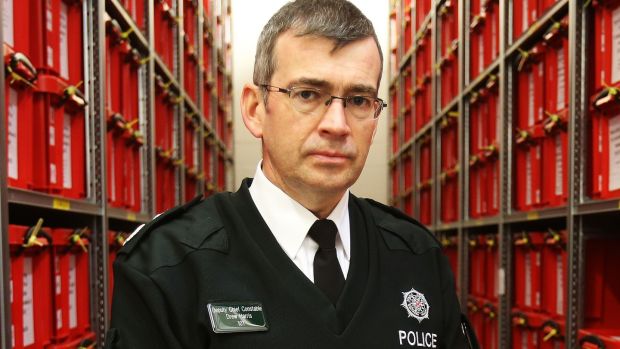
Drew Harris
As former Assistant and Deputy Chief Constable of the PSNI and its former interface with the Security Services (UK), Harris has been accused of fighting attempts to get information about the perpetrators of atrocities like the Miami Showband murders and of blocking access to files about the many murders carried out by the Mid-Ulster, UVF ‘Brigadier’ Robin Jackson. In 2011 the Historical Inquiries Team found Jackson had been connected to a weapon used in the Miami Showband murders by fingerprint evidence.
In the High Court in Belfast in 2017 Judge Seamus Treacy ruled that there should be an overarching investigation into State collusion with the ‘Glenanne Gang’ and asked the PSNI to respond. In the Court of Appeal in Belfast the Lord Chief Justice ruled in July 9 [2019] against an appeal and said there must be an independent investigation carried out by the PSNI. Chief Superintendent Jon Boutcher has started an investigation into the Glennane series of killings as part of Operation Kenova.
In an extraordinary development, Eugene Reavey whose three brothers were murdered in Whitecross in Co Armagh in 1976, has been told by the Police Ombudsman of Northern Ireland that a file has been sent to the Public Prosecution Service in the case. It is believed to recommend prosecution of a former RUC man, who was a member as ‘The Glennane Gang’.
With the signing into law in Ireland of the Criminal Justice (International Cooperation) Act 2019, the Garda can now give evidence and share intelligence with Coroners’ Courts in Northern Ireland.
In an interesting twist of circumstances, Commissioner Harris now has charge of the legacy files of secret Garda intelligence. Clearly how ambitious he’d want to be in sharing this information with authorities in the North is uncertain.
As Assistant Chief Constable of the PSNI Drew Harris was the liaison between the Security Services (UK) , the PSNI and the Smithwick Tribunal from 2006 to 2014. (See also https://villagemagazine.ie/how-smithwick-got-diverted/ )The Tribunal was inquiring into alleged Garda collusion in the murders of Chief Superintendent Harry Breen and Superintendent Bob Buchanan. (See also https://villagemagazine.ie/investigation-killusion/http://Killusion ) He confirmed that he had spoken to the Security Service before he gave evidence to the Tribunal in October 2012.

Drew confirms his consultation with the ‘British Security Service’
In 1989 MI5 reported the overall picture seems to be one of RUC collusion and links with the Loyalists which is similar in scale to that of the UDR, but the latter is much more likely to become involved in very serious crimes
Dealing with the past is also causing problems for some retired RUC men – members of the Northern Ireland Retired Police Officers’ Association (NIRPOA). They now apparently believe a policy of non-co-operation with bodies like the Police Ombudsman of Northern Ireland has been counterproductive.

The Miami Showband
Part 2: Ombudsman confirms collusion
NIPROA took a Judicial Review against the Police Ombudsman of Northern Ireland and his 2016 report on the 1994 Heights Bar murders in Loughinisland. Former Head of Special Branch and Assistant Chief Constable Ray White often acts as its spokesman.
In 1989 MI5 reported the overall picture seems to be one of RUC collusion and links with the Loyalists which is similar in scale to that of the UDR, but the latter is much more likely to become involved in very serious crimes
Their affidavit was submitted in the names of Ray White and retired Chief Superintendent Thomas Hawthorne, the former Sub Divisional Commander in Co Down and chief investigator of the Loughinisland killings. They challenged the powers of the Ombudsman to come to a verdict of collusion in his report on the murders. The report tried to establish the trail of the weapons which were used in the attack, from their importation into NI in late 1987 to their use in 1994. “Tried”, because as he said in his report: “Throughout my investigation I have been unable to obtain key documents, including records relating to the police response to the importation of firearms in 1987”. The former Officers had a victory of sorts when Justice McCloskey gave judgment for the RUC officers and vindicated Hawthorne. The judge finally and reluctantly recused himself from the case. He had represented the RUC in an appeal against a previous Ombudsman’s finding in the investigation of the Omagh Bombing.
After further legal actions over the Police Ombudsman’s Loughinisland Report, Lord Chief Justice Morgan delivered a judgement of the Court of Appeal in Belfast in an action entitled, ‘In the application by Thomas Hawthorne and Raymond White for Judicial Review; and in the matter of a Decision by of The Police Ombudsman for Northern Ireland.’ In it the Court made the decision not to strike down the Police Ombudsman’s statement as it accepted: “it would have been appropriate for the Ombudsman to acknowledge that the matters uncovered by him were very largely what the families claimed constituted collusive behaviour”.
“ it would have been appropriate for the Ombudsman to acknowledge that the matters uncovered by him were very largely what the families claimed constituted collusive behaviour”.
The Court also held that some of the Ombudsman’s comments “overstepped the mark” by amounting to findings of criminal offences by police officers.
The Ombudsman’s report was damning of the RUC investigation into the murders of six men and of earlier searches for weapons; and concluded that there was collusion from beginning to end. One of his chief criticisms was of an inexplicable failure to conduct a proper search for the weapons, particularly at the farm of the now notorious Glennane-based farmer, Ulster Resistance supporter and UVF accomplice, the late James Mitchell.
Part 3: Murder of RUC Commander and colluder with UVF, Harry Breen
The RUC Divisional Commander for Armagh and parts of Co Down was Harry Breen until he was shot dead in March 1989. See also: https://villagemagazine.ie/nailing-harry-breen/ His was a hugely important role with access to Special Branch intelligence and to operationally-central Tasking and Co-ordination Group (TCG) briefings. TCG’s which were controlled by RUC Special Branch, coordinated operations involving regular army regiments, the UDR, and the RUC, including RUC Headquarters Mobile Support Units. His command of the Divisional Mobile support groups based in Newry and Armagh which carried out surveillance operations, as well as manning checkpoints and searches, meant he was in command of every operation carried out in his Division. As Divisional Commander, Breen was constantly on the move and his police journal shows that he regularly visited every station in the Division from Aughnacloy to Richhill, Forkhill, Armagh, Loughgall, to Ballynahinch and Rathfriland in Co Down.

Harry Breen
Harry Breen,probably knew more than anyone about the secret world of Loyalists informers. Sources say he was one of the very few who also knew the whereabouts of the “Resistance” arms cache. One Resistance leader said “there were three people who knew the location of the Ulster Resistancee arms cache. After Harry Breen was shot dead, there were two”.
At this time, according to Security Forces sources, Breen was deeply distrustful of the new security directions coming from the Security Services and the NIO. Like many RUC men, he saw them as appeasement rather than taking the fight to the IRA, with a new emphasis on talks with Republicans rather than on fighting their terrorism. They say Breen would never have agreed to a “ceasefire” which they saw coming down the line.
Breen had been a member of a notorious Special Patrol Group (SPG) in Armagh, in the 1970s. It was said to have been aided and abetted by the mid-Ulster UVF
Whether Breen was sympathetic to UR as some believe, or acting on an intelligence agenda it’s unlikely he reached a senior position in the RUC as a “rogue” policeman.

Breen’s death still causes unease among former members of the Security Forces in Armagh. One former UDR man said “They couldn’t have let him live. He knew too much”.
The RUC and UDR in Armagh at this time were under ferocious attack from the IRA – often shot down in front of their families. This has left a residue of bitterness to this day. But they came under another form of attack over the constant flood of leaks from RUC stations allowing the targeting of Republican suspects and their extended families, by Loyalists. The Irish Government regularly protested about the leaks and threatened to stop sharing information under the structures of the Anglo Irish Agreement.
The Security Services also pointed the finger at the RUC as can be seen in documents published in the de Silva Report. A memo from the Head of the Assessments Group ( M15) to the Director and Coordinator of Intelligence John Devereux (29 September 1989) gives a stark warning:
All in all the overall picture seems to be one of RUC collusion and links with the Loyalists which is similar in scale (if not greater in some respects) to that of the UDR, but the latter is much more likely to become involved in very serious crimes…
Pat Finucane and Loughlin McGinn were shot dead on the back of leaks in February and August 1989. The UDR in Rathfriland had used RUC documents to identify targets including McGinn.

Pat Finucane
Spotlight showed images of RUC intelligence that ended up in the hands of the UFF/UDA. It was used to target suspected republicans
BBC ‘Spotlight’ showed some of the RUC documents used to target Republicans. In his report on the Heights Bar in Loughinisland the Ombudsman quoted a Special Branch officer in Co Down who kept the fruits of a 1988 search of Clough Orange Hall secret for fear of leaks to Loyalists. He had retrieved assault rifles and other weaponry. The marathon Stevens Investigations into collusion began in September 1989 as a result of the murders.

BBC journalist Chris Moore was shown these documents by the UFF to ‘prove’ they were shooting the right men in August 1989 after the murder of Loughlin McGinn. The documents were RUC Collator bulletins from Harry Breen’s H Division stations, generated in late 1988. (Shown in Spotlight)

De Silva was scathing about the withholding of information from Stevens in 1989
Breen had been a member of a notorious RUC Special Patrol Group on Armagh in the 1970s. They were set up to conduct searches, man checkpoints and perform other special duties. It was said to have been aided and abetted by the mid-Ulster UVF led by notorious Commander Robin Jackson a member of the UDR. There seems no doubt Jackson was a protected State informer. Even former senior RUC Officers find it hard to work out exactly which agency was running Jackson. One concluded recently that it was probably multiple agencies at different times. However British Army sources have recently said that Jackson was handled by or through the RUC and not Army Intelligence.
A former member of the UDR who lived near Glennane said, ‘Sure that SPG [Special Patrol Group] down here – they took off their police uniforms and put on their camouflage gear and shot people. Then they put the uniforms back on and went to the house to investigate. Sure someone knew what was going on.’
John Weir, a former SPG member in South Armagh, described Breen in a statement to the Barron Investigation into the Dublin and Monaghan Bombings in 2003, as being fully aware, and encouraging, of their actions.

John Weir’s statement made in 1999 submitted to the Barron Tribunal. Please note the references to Harry Breen and Billy McBride.
Weir’s statement first made in 1999, includes numerous mentions of Breen. Weir said in a later interview that Breen wasn’t a rogue policeman but that he was “doing his duty” in his dealings with Jackson and other loyalists. Weir had been imprisoned for ten years in 1979 for his part in a conspiracy to murder Catholic chemist William Strathearn in Aghogill in Antrim. He maintained Jackson was actually the gunman but that he was not charged after an ‘intervention’. Jackson only ever served one short term of imprisonment.

John Weir
According to Garda Special Branch sources, Brian Fitzsimons, former Chief Superintendent at Newry RUC Station, who became Deputy Head of the RUC Special Branch in the early 1980s, and rose to become Head in 1989, said that Breen was “gathering arms” for Loyalists in Armagh. This revelation was made to a Garda Special Branch source as early as the 1970s. Ex Army Intelligence officer Colin Wallace gave a statement to Judge Barron’s investigations into the Dublin and Monaghan bombings in 2003 which alleged that Army Intelligence believed Harry Breen and Frank Murray, who was the Head of Special Branch in Armagh, were sympathetic to Loyalist paras: “Harry Breen was one of the key figures giving information and support for (their) operations generally”. However, Breen’s career proceeded apace. He became Chief Superintendent in Bessbrook and then Divisional Commander in H Division containing a good deal of Armagh and part of Co Down. Breen succeeded Chief Superintendent Brian Lally as Divisional Commander in February 1988. Lally retired aged 53 after refusing transfer to a post liaising with the new Army Battalion which policed the border, as he considered the transfer a demotion. In 1982 Lally was reported by the ‘Irish News’ to have helped prepare the CID file after INLA men Roddy Carroll and Seamus Grew were shot dead on the outskirts of the city. Lally was demoted a short time after the decision was made not to prosecute Senior RUC Officers in relation to the shoot-to-kill incidents of 1982. The Stalker/Sampson reports on the killing of the unarmed men by an armed RUC unit have never been published. The decision not to prosecute was highly contentious.

The Irish News reported on Brian Lally’s retirement
After just over a year as Divisional Commander, Breen was ambushed by the IRA on the Edenappa Road on 20 March 1989. An IRA statement to the Smithwick Tribunal investigating the murder said Breen was a target after Loughgall when the IRA’s East Tyrone Brigade were wiped out attempting to bomb an RUC station. Breen was in charge of the armed RUC officers at the scene according to sources.
The actions of Breen and the RUC SPG operating in Armagh in the 1970s will now be an integral part of an investigation into what became known as ‘The Glennane Gang’.
As described in Village in April 2017, Breen’s RUC journal described a series of weapons searches, arrests and convictions in Armagh and Down during 1988 in obvious Loyalist areas like Richhill and Hamiltonsbawn, that did not feature in the NI Ombudsman’s report. Sources in Armagh have also described intensive searches by the Army in 1988 and 1989 and later and there is much information in published sources about arrests and convictions in connection with weapons finds. The ballistics trail of Ulster Resistance and UVF weapons does not end at Mitchell’s farm in January 1988. It leads to Loughinisland in 1994.
‘The actions of Breen and the RUC in Armagh in the 1970s will now be an integral part of an investigation into what became known as ‘The Glennane Gang’
Part 4: Ulster Resistance (UR)
The trail begins with the founding of Ulster Resistance by Ian Paisley, Noel Little, Peter Robinson and others, to resist the Anglo Irish Agreement in 1985. There followed various Loyalist plots to import Arms. Normally reliant on stolen weapons or weapons ‘donated’ by part time members of the Security Forces, the importation of high-velocity weapons, especially VZ58 assault rifles in late 1987, gave the Loyalists new killing capacity. All in all Kalashnikov-type weapons like the VZ58 killed over 70 people.

Leading members of Ulster Resistance (UR)
The Ombudsman focuses the first part of his report in Armagh, the engine room of the UR/UVF/UDA plots to import weapons. It traces the arms importation to the 1985 visit of loyalist covert-army-FRU (Force Research Unit) Agent Brian Nelson to South Africa and his dealings with the massive arms conglomerate, Armscor. The UR contact Richard Wright was a director of Nimrod, the Marketing arm of Armscor and an uncle of a UR founder, Alan Wright. One of the UR founders, Markethill man Noel Little, also had long-standing links with Wright.
The Loyalist connection with the arms trade was through Shorts’ East Belfast factory which manufactured sophisticated ground-to-air missiles. The Blowpipe and more sophisticated successor the Starburst, were highly sought after by the South Africans for their bush wars.
Shorts were willing sellers to a myriad of customers including US Colonel Oliver North involved in his nefarious schemes to arm the ‘Contras’ in Nicaragua, and to exchange arms for hostages with the Iranians in the 1980s.

Lt. Col. Oliver North
Peter Kornbluh in ‘The Pinochet Files’ has some fascinating details of North’s relationship with Shorts:
Their elaborate scheme (North and fellow conspirators) called for Short Brothers, the Belfast-based manufacturer of the Blowpipe missile, to facilitate the transfer of the weapons from Chile to the Contra forces through El Salvador, using falsified end-user certificates.
North reported:
The VP from Short Bros sought me out several months ago and I met with him again…Short Bros, the manufacturer of the Blowpipe is willing to arrange a deal, conduct the training and even send UK “tech reps” fwd if we can close the arrangement. Dick Secord has already paid 10% down on the delivery and we have a (country deleted) EUC (end user) which is applicable to Chile.


The above documents are from Peter Kornbluh’s ‘The Pinochet Files’.
North had an Irish passport and, interestingly, former US Vice President, Dan Quayle, once associated with North, still retains some involvement in Northern Ireland as Chairman of Cerberus’ Investment arm. In other words despite an arms embargo the UK Government covertly supported the arms trade.
The arrangements in 1987 were facilitated by Douglas Bernhardt, an Armscor agent in Switzerland, who apparently brokered the deal with ‘Brigadier’ John Michael, the UDA leader, who was murdered by a car bomb shortly before the arms arrived in 1988. After receiving the money Bernhardt bought the guns from a Lebanese middleman. They were then shipped from Beirut to Belfast. The weapons consisted of 206 VZ58s high velocity rifles, 26 .38 Browning’s, 4 rocket launchers, 25,000 rounds of ammunition, and grenades. A member of ‘Resistance’ said recently, ‘ that consignment didn’t contain any explosives which would have meant Loyalists were really on a par with the IRA. There were just a few grenades’. Michael Stone used a Browning pistol and threw grenades as he shot into the crowd of mourners at a funeral in Milltown cemetery on March 16th,1988. They were from the consignment. Loyalist sources are convinced the entire deal happened under the eyes of the various security services. Indeed it was only through Security Service and Army agents that some weapons were seized after they had initially been slipped out of Belfast port and driven to Armagh.
The deal to import weapons was made between the UVF, commanded by ‘Brigadier’ Robin Jackson, whose enforcers lived around the UVF power base in the Lurgan, Portadown, Armagh, Tandragee area; and Ulster Resistance, also rooted in Armagh. They were a colourful mixture of Paisleyites and unionists including Noel Little, Alan Wright, and Peter Robinson, in alliance with the UVF, whose stronghold was in Armagh. ‘Resistance’ as it became known was supported by ‘small men’ – townspeople and farmers many of whom were members of the Territorial Army or UDR. The third party to the importation was the Belfast UDA with its informers including FRU agent Brian Nelson.

Robin Jackson
The shipment came into Belfast Port in late 1987. The weapons were transported by an Armagh man who drove articulated trucks in a 40-foot lorry to a location outside Portadown. One source connected to Ulster Resistance pointed out that the weapons stayed in the container and had to be stored in a large yard. He named a UVF leader who had such a yard near Portadown. Having lost track of the initial delivery, which the Ombudsman described as a “major intelligence failure”, it was through the UDA link that Special Branch in Belfast picked up the trail again on 8 January 1988. The Head of Belfast Special Branch at this time was Ray White, mentioned above, who had served in Special Branch in Lurgan in the late 1970s and had a particular knowledge of Loyalist paramilitaries in Mid-Ulster, as he told the Smithwick Tribunal in 2011.
The book ‘Phoenix: Policing the shadows’, published in 1996, after Chief Superintendent Ian Phoenix had been killed in the Chinook crash in 1994, describes how Phoenix, then head of an RUC Intelligence unit, responded when he learned a “Prod resupply was in the Province and due for dispersal tomorrow”. Phoenix described how “Surveillance was carried out on one of the suspects N, who met twice with the UDA leader Andy Tyrie on the date…a watch was let [sic] on B all night”. A loyalist source said Andy Tyrie had been given two rocket launchers but they disappeared.

The Chinook helicopter crash. The victims included: John Devereux, Director and Coordinator of Intelligence, Brian Fitzsimons, Head of Special Branch, Superintendent Ian Phoenix, Colonel George Williams, Army Intelligence and Head of FRU.
Phoenix described how the day after the shipment arrived, two Ford Granada cars were seen acting suspiciously in the Tandragee area. A road block was mounted and the cars were stopped. Inside was Davy Payne. Two other men, his UDA helpers, were also arrested.
The next day follow-up searches were begun in the Tandragee area and on 3 February the police uncovered a UVF arms-hide containing rocket launchers, a submachine-gun, rifles, revolvers and 12,000 rounds of ammunition. Phoenix concluded that “The only group to successfully get its hand on the…weapons was Ulster Resistance. However, it later reached an agreement with the other two organisations and shared its portion of the haul with them, ensuring a loyalist escalation of violence would take place over the coming years”. A Resistance source claimed recently that Loyalists were not the only ones making targeting decisions, that some ‘non-paramilitary’ members of Ulster Resistance decided who would be shot . He did not name them.
Sources in Armagh recently gave Village magazine background detail to the operation – how the UDA had been offered a delivery to Belfast but had decided to pick up their share of the weapons in Armagh. It was the main UR organiser in Armagh who insisted that the UDA Belfast contingent hire Ford saloon cars in Belfast, which had the effect of making them conspicuous in rural Armagh. Davey Payne the UDA ‘Brigadier’ with his two low-level UDA men set off in the two Fords and an Austin Maestro with a prominent Ulster Resistance man’s number on his hand. Tracked by the E4A surveillance team from Belfast, Payne and his entourage parked in a car park in Tandragee before setting off down the B3, which is a winding road, in the direction of Markethill, from which there are small roads and lanes leading off to Richhill and Hamiltonsbawn. They were making for the farm which later Intelligence said was within five miles of the town where the weapons were said to be stored, still in the original container. E4A apparently “became unsighted” of the three.
The next day, in a planned operation by the Tasking and Coordinating Group (TCG) in Armagh, the trio were tracked from Tandragee to the Mahon Road near Portadown on their way back to Belfast laden with weapons, and were arrested outside the UDR barracks and RUC station. Former UDR Major John Potter in his book on the UDR “Testimony to Courage” (2002) is, strange as it may seem, one of the clearest sources for searches at this point and later significant finds in November 1988. He says the UDR were part of these planned operations.
The three – Davey Payne, and the footsoldiers Aiken and McCullough – were remanded in custody to Belfast and then taken to Castlereagh holding centre for interrogation.

Davey Payne, Gawn Street, Belfast
That evening the UDA HQ in Gawn Street was raided, arrests followed and documents were seized. The following October Payne was sentenced to 20, and the others 14, years by Belfast High Court.
Despite these obvious attempts to track the weapons by Belfast Special Branch and the TCG in Armagh there was a general policy of non co-operation with the Ombudsman when he tried to investigate the arms importation. The Head of the TCG in 1989 refused to give information to the Ombudsman and all TCG records have been destroyed. He did, however, give evidence to Smithwick, anonymously under a cipher number. His only contribution was to confirm that the TCG in Armagh had no operation in place on 20 March 1989 in or around the Edenappa Road.
However, as a result of the arrests and interrogations of the UDA men on 12 January 1988, the investigating officers obtained intelligence that the weapons were stored in a barn beside a blue-coloured house within five miles of Tandragee, the main arms “depot”. The Ombudsman was convinced this description points to James Mitchell’s farm in Glennane a few miles South of Markethill and ten miles from Tandragee. He based this belief on the description above, on an allegation gathered by investigators, and on other intelligence that he has seen. He stated in his report “I have seen intelligence that, shortly after the arrests at Mahon Road, individuals at James Mitchell’s farms were warned to remove the remaining weapons”.

James Mitchell
However, some sources in Armagh say the arms never reached, nor were they intended for, Glennane. Not only were the small country roads full of troops so transporting large loads was dangerous, the container could only fit in a large barn, not in Mitchell’s sheds.
The Ombudsman view, however, is understandable. Mitchell, whose farm was the meeting place for the gang formed around the SPG in Armagh in the 1970s, was involved with the UVF for decades and was in on the Ulster Resistance plot with other Markethill men. He had been arrested in 1980 and sentenced to three years imprisonment for the possession of arms and explosives. In 1990, as the Ombudsman’s report detailed, there was intelligence describing meetings between Mitchell, the UR leaders and the UVF about the arms arrival.
In 1991 Mitchell’s farm was searched and ammunition of a different type to the imports of 1987 seized. However, the Ombudsman Investigators also saw an entry in the RUC’s Reports Book from Markethill from January 1988 which describes a search by the Royal Engineers of a House on the Lough Road, Glennane, owned by Mitchell – at which nothing was found. Sources in Armagh are adamant that a large swathe of countryside, including Glennane, was searched at this time: cattle turned out of barns, grain stores emptied and a ten-mile cordon erected around the town of Markethill. However, they say, the arms had gone elsewhere.
“The failure to stop or retrieve all the weapons, despite the involvement of informants in the arms importation, was a significant intelligence failure…This is particularly the case in relation to the failure to retrieve imported weapons from a farm owned by James Mitchell. The outcome of this failure was that not all the weapons were recovered by the police and many, including the VZ58 rifle used in Loughinisland, were subsequently used in a wide range of murders”.Between March 1988 and May 2005 there were at least 70 murders or attempted murders using the VZ58. The weapons added a new edge to Loyalist gunmen campaign which increased in intensity.
The Ombudsman rightly points out that “Despite being implicated by Intelligence in the importation of these weapons senior members of the UVF, UDA and Ulster Resistance were not subject of police investigation”. The arrests and convictions that followed were of relatively minor players. The leaders of the UVF were largely untouched. The small men of Ulster Resistance faded into the background.
By now many Loyalists in Armagh had enough of being used as the various intelligence services mudguards. As one said recently “what you must remember is – Loyalists hate M15”.
The Ombudsman appears to conclude that the blame for the failure of the surveillance operation and loss of weapons rests with the local RUC who by implication were colluding in covering up the weapons cache at Mitchell’s Farm.
Mitchell was described recently as a decoy – a convenient scapegoat to hide the real and often anonymous power brokers in the Loyalist paramilitary leadership in Armagh. One loyalist commented that “every time anything happened in Armagh the men in Portadown had a saying – ‘ Ah, Jimmy Mitchell’s for it now’ “.
As Ian Phoenix had also mentioned in his book there was a significant find of UVF weapons at Flush Road on the outskirts of Belfast on the 4th of February 1988 including a rocket launcher with 26 rockets and 40,000 rounds of ammunition, during a “planned search” as reported by the Irish Times.
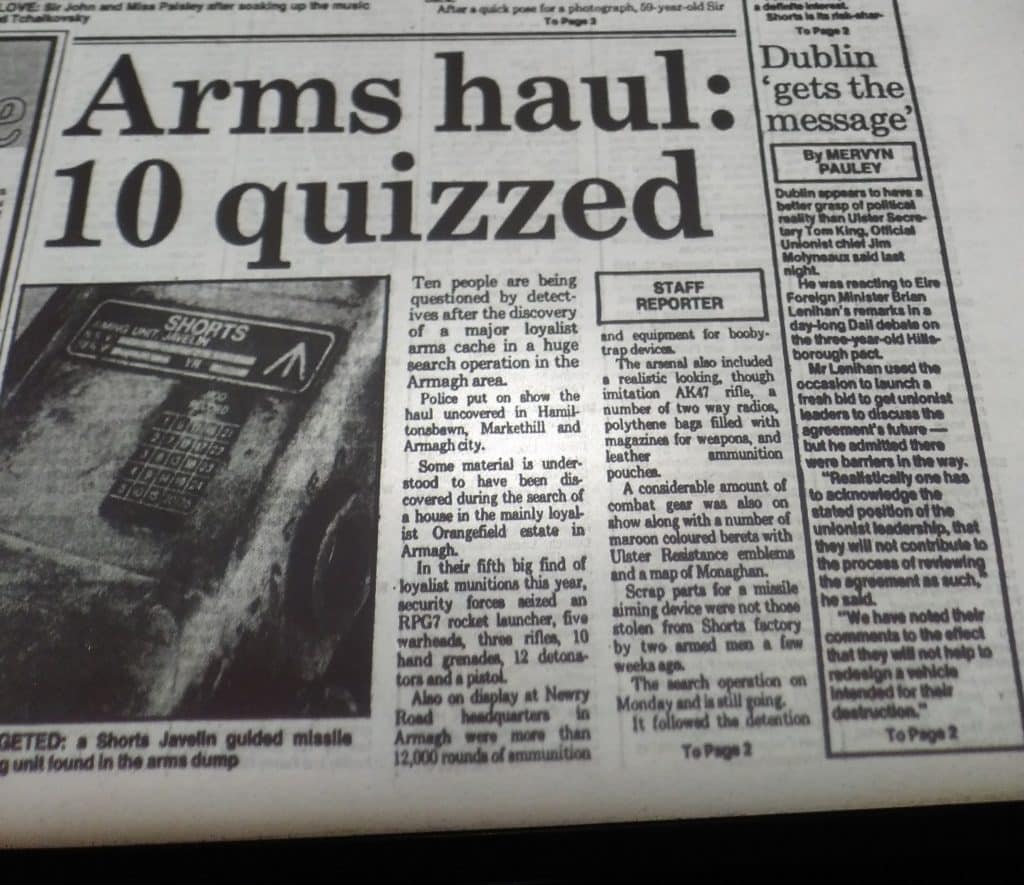
The Portadown Times carried stories on the arms seizures of November 1988 and the arrests in Paris in April 1989.

While searches for weapons continued in Armagh the arms dealing continued. In April 1989 Ulster Resistance leader Noel Little was arrested in the Hilton Hotel in Paris by French Internal Security along with Samuel Quinn, a Sergeant and weapons instructor in the Territorial Army from Newtownards and James King, a Free Presbyterian from Killyleagh Co Down. The three were in a meeting with Daniel Storm, a South African diplomat and Douglas Bernhart, the Geneva based arms dealer while reportedly demonstrating a Short’s Blowpipe missile launcher. Much more significantly, according to a former senior RUC officer, they were also demonstrating a Javelin aiming system stolen from Shorts factory some weeks earlier. This was highly important technology and a protected military secret. There was consternation in RUC Headquarters. They were subsequently charged with arms dealing by examining Magistrate Jean-Louis Buguiere, who had also been in charge of the investigation of the ‘Eksund’ seized in French waters carrying Libyan arms in October 1987.
A telex * from the Irish Embassy in Paris quotes Sorj Chalandon, a journalist with the newspaper Liberation, as saying Little was the “demarcheur” or lobbyist for Ulster Resistance, on the Continent since 1987 and that his article also mentioned the finding of a Blowpipe missile in Markethill, in Armagh in November 1988. The Embassy telex went on “ he (Chalandon) also raises the possibility that the entire operation could have been set up as a provocation by extremists in the South African Directorate of Military Intelligence Service. He says that it was absurd for the transaction to take place in the heart of Paris and that the affair could cause damage not just in France but also in Britain since Mrs Thatcher’s Government has been attributed an essential role in the recent renewal of direct contact between Moscow and Pretoria”. (* Telex from the Irish Embassy Paris to the Secretary of the Department of Foreign Affairs 24/04/’89).

Apart from 1990 intelligence that Jackson had assault rifles and a rocket launcher and that he gave weapons to the ‘Brigadier’ of East Belfast UVF, the trail of the weapons in Armagh ran cold as far as the Ombudsman has been concerned.
Sources maintain to Village that the UR share of the weapons was supposed to go to one of the UR leaders, in Markethill, about four miles north of Glennane, but suspicion fell on one of the leaders, believed to be working for M15 so the UR men insisted their share be diverted from his chosen location, a property near Markethill. The owner was a dedicated Paisleyite.
‘Despite an arms embargo the UK Government covertly supported Ollie North’s efforts to arm Nicaraguan Contras’.
The weapons, say the sources, had initially been collected by a man connected to the Portadown UVF, driven in an articulated lorry to North Armagh and stored in a container in the barn between Tandragee and Armagh. The weapons’ distribution remained under UVF supervision. The UR share was, eventually, loaded onto a Territorial Army ambulance and ultimately ended up in Armagh TA barracks. Where it is today, remains a closely guarded secret.
Willie Frazer from Markethill was alleged in the ‘Spotlight’ programme to be a transporter and distributor of UR weapons. His family has denied that assertion. However, he at least had sweeping knowledge about events in Armagh over the years and a close relationships with senior loyalists in Belfast. As a young man in Armagh in the mid-1970s the SAS warned Frazer off getting close to Robert Nairac, MI5-controlled provocateur, who was a familiar figure in the Markethill and Whitescross areas as well as in South Armagh. Nairac was designated a “Grenadier Guardsman” but worked for a ‘special unit’ accountable to MI5 and led by SAS agent Tony Ball though, confoundingly, not answerable to the SAS. Security sources in Armagh say a four man SAS unit was in Forkhill RUC station the night Nairac was taken from the Four Steps Inn in Drumintee. They also say that one of the IRA group that seized Nairac was a suspected double agent who reported to one of Britain’s security or military forces. This raises the intriguing possibility that the British State knows more about the Nairac abduction than they have ever admitted. As things stand, Nairac’s body has never been recovered. He remains one of only two of the ‘disappeared’ who have not been found.
Documents recently released to solicitors for one of the Miami Showband victims allegedly reveal Nairac obtained equipment and weapons for, co-ordinated and executed the massacre which was perpetrated by the UVF led by their commander Robin Jackson. However, the Ministry of Defence has emphatically denied this. Survivor Stephen Travers has said one of the attackers spoke with an English accent. Two serving UDR officers, and one ex-UDR officer served life sentences for the murders.
More revelations about Nairac’s activities here are expected in coming months. One of the reasons they have not emerged earlier is that MI5-generated information is covered by the Official Secrets Act.
Frazer was approached in recent years and asked about the location of the remaining UR weapons – by various figures from a preacher to a former RUC officer – but he kept his secrets. Well informed sources say the Ulster Resistance weapons cache remains in Armagh
In part 2 of his report the Ombudsman describes the emergence of a UVF gang in Co Down and murders carried out from 1988 including Paddy Kielty’s father shot dead in Dundrum. They were later to carry out the murders of 6 people in Loughinisland, acting with the mid Ulster and Shankill Rd units.
The weapon used in the attack on the Heights Bar to devastating effect was one of Jackson’s VZ58s a rifle equivalent to the Kalashnikov or armalite. The PONI Report traced the weapon used to other crimes. Joseph Reynolds had been murdered with the same VZ58 on the 12th of October 1993 on his way to work in Shorts Aerospace in Sydenham East Belfast. On the 22nd March 1994 there was an attempted murder at a butchers in Cromac Street, Belfast, a joint effort by East-Belfast and Mid-Ulster. The gun used was a 9mm Browning-type pistol matched to one found at Loughinisland. Another attempted murder in Boucher Crescent in South Belfast was linked to a gun later used by the South Down unit at the Thierfurth Inn.
In June 1994 four men with links to the UVF were shot by the INLA on the Shankill Road. Two died from their injuries. This was to unleash a revenge attack.
After these murders the command went out for “blood on the streets” and killings followed. The “intelligence picture” in relation to the South Down UVF Unit based around Newcastle indicates it took orders from Trevor King the commander of the Shankill Road unit and were supplied with weapons including a VZ58, according to the Ombudsman.
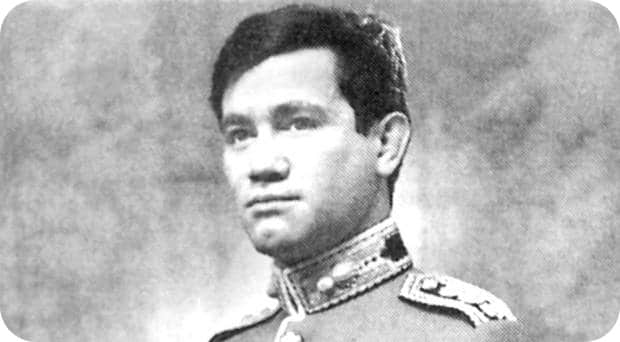
Robert Nairac
On the evening of June 18th 1994 the UVF gunmen drove to the Heights Bar, a quiet country pub near Downpatrick. They opened fire in the bar with a VZ58 and within seconds 6 people were dead and 14 injured. Ever since their grieving relatives have been trying to discover why no one has stood trial for the murders. The Ombudsman gave a damning verdict on the RUC investigation and says that there was collusion from start to finish and that the RUC was infiltrated by or had close links with the UVF.
The Ombudsman appears to conclude that the blame for the failure of the surveillance operation and loss of weapons rests with the local RUC who by implication were colluding in covering up the weapons cache at Mitchell’s Farm but Mitchell may have just been a convenient scapegoat
In his report the Ombudsman used cyphers to identify two brothers living locally to the pub, one of whom he believes was the gunman. Alex Gibney in his powerful documentary “No Stone Unturned” names two men he alleges were the gunmen based on a leaked intelligence document and a letter implicating – local man Ronald Hawthorne. Hawthorn has made complaints to the press Ombudsman North and South, about being named as one of the gunmen.
Robin Jackson’s arsenal of weapons was used in multiple murders. Senior Garda, and well informed loyalist sources, believe he was a highly protected agent. There were other untouchables associated with the Mid-Ulster UVF. Some, wealthy men unknown outside their own areas. It is now also known that the UVF in Belfast was thoroughly infiltrated. The recent trial of UVF leader ‘Brigadier’ Gary Haggarty, a Special Branch agent while he carried out numerous murders, saw him get a shockingly short sentence in the High Court in Belfast.
Why are former RUC men reluctant to talk about the searches for weapons?
One source in mid Ulster with an insight into events would only say “because the whole point of it was to put pressure on the Provos”.
Recently a man describing himself as a former RUC officer and claiming to have worked closely with the late Chief Superintendent Harry Breen, has been in Armagh enquiring about the whereabouts of the Ulster Resistance weapons. His identity is not known.
As the Judicial Review against the appointment of Drew Harris as Garda Commissioner and the recent arrest and subsequent dropping of charges against the journalist/researcher and television producer of “No Stone Unturned” (over an investigation into alleged stolen documents) has shown, the past has a way of forcing its way into the present.
Part 5: William Tells:

William Frazer (above right insert) died in 2019. His funeral service was held near his home in rural Armagh. Arlene Foster, his friend and solicitor, gave a warm oration at it.
Willie Frazer was a witness at the Smithwick Tribunal in September 2012. He felt he had been excluded from the Tribunal he had helped set up but there were promises to keep. In evidence, he revealed that one of Harry Breen’s last meetings was the night before he was shot with RUC Sgt Billy McBride; despite the disparity in rank McBride was Breen’s close friend. He also features in John Weir’s 2003 statement about the Glenanne gang. McBride was a proficient amateur gunsmith. McBride revealed details of Breen’s anxious state of mind after being ordered to travel through South Armagh and over the Border. Breen he said was fearful not of a Garda but because he knew from his intelligence sources that he was a high priority target and in imminent danger. McBride said Breen told him he was ‘getting his affairs in order’. McBride advised Breen not to travel the next morning but Breen said he had been left with no choice as he had been issued with a written order by an Assistant Chief Constable on behalf of Jack Hermon, the Chief Constable. His widow June Breen later revealed that he had left instructions that if he was killed, the RUC’s Chief Constable, Sir Jack Hermon, was not to attend his funeral. (In the event, Hermon did attend.)

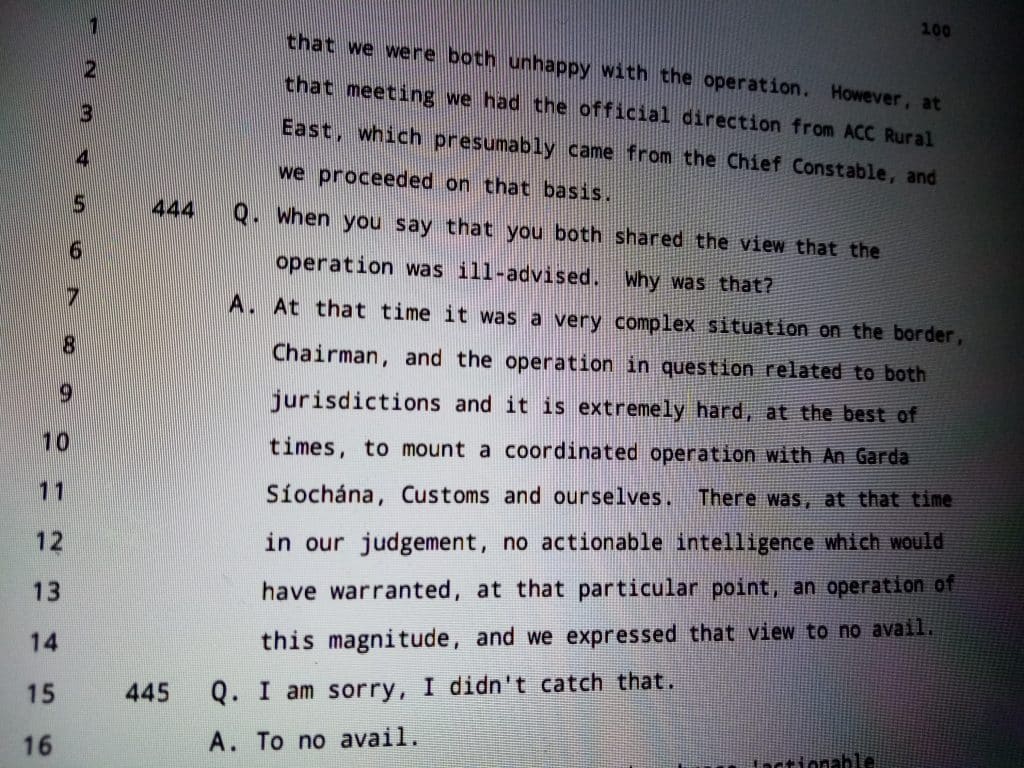
Witness 27 gave evidence to the Smithwick Tribunal on Day 30. He was a former Border Chief Superintendent and the RUC liaison with the 3 (border) brigade, stationed at Dromad Barracks. He attended a meeting with the Secretary of State and some newly arrived army officers who gave what Breen and himself thought were exaggerated claims of oil tankers coming in and out of IRA man Sláb Murphy’s Yard. The Secretary of State damanded action and the Chief Constable Jack Hermon, agreed. Witness 27 said Harry Breen was horrified that the Chief Constable would order an operation to be carried out on the basis of such exaggerated and loose claims. In the event Breen advised the Gardai in Dundalk to ignore the exaggerated claims of British Army officers.

Willie Frazer had three meetings with Judge Smithwick on the Edenappa Road at the location where C. S Breen and Buchanan were ambushed. During the fraught meetings Frazer insisted that Smithwick should seek answers from British Army Officers who had been carrying out a major two week operation to search for and remove bombs along the railway line that ran across the entrance to the Edenappa Road and the nearby Kilnasaggart Bridge. Breen as Divisional Commander was ultimately responsible for declaring it was safe to open that section of the Newry to Portadown railway line. The operation was due to end. Frazers meetings ended in acrimony as Smithwick dismissed his concerns.
Harry Breen’s police journal recorded his meetings with 1RRF based in Bessbrook Mill, at the start of a covert operation to clear any suspected explosive devices from the railway line which runs along the entrance to the Edenappa Road and over the Kilnasaggart Bridge.As Divisional Commander it was a constant part of Breens duty to keep the Dundalk-Portadown section open. The line was regularly targeted by the IRA.
3.3.1989
Duty to Bessbrook Mill, liaised with 1 RRF re railway line and incidents in Kilnasaggart.
6.3.1989
Duty to Bessbrook Mill and liaison with 1RRF re railway line.
7.3.89
Discussions with 1RRF and 2 UDR re protection of the railway line.
This date marked the start of a 2 week operation to clear the line. A large área including the Edenappa Road were declared ‘out of bounds’ , the purpose of which was to prevent any other security force activity being carried out in the area. Breen was due to return to Bessbrook Mill via the Edenappa Road for a meeting about the army Operation which was to end just as he was shot dead.

By the late ’80s the British Army had developed a sophisticated surveillance system in South Armagh. Rtd Colonel Richard Iron was the Operations Officer for the 39th Infantry Brigade who developed what he described as the “counter terrorism surveillance network”, in South Armagh between 1986-88.
1RRF regiment logs from March 20, 1989 show a large army presence dug in on Feede Mountain overlooking the road and on the surrounding area as well as the use of Infra-red sensors to detect movement in the surrounding countryside.
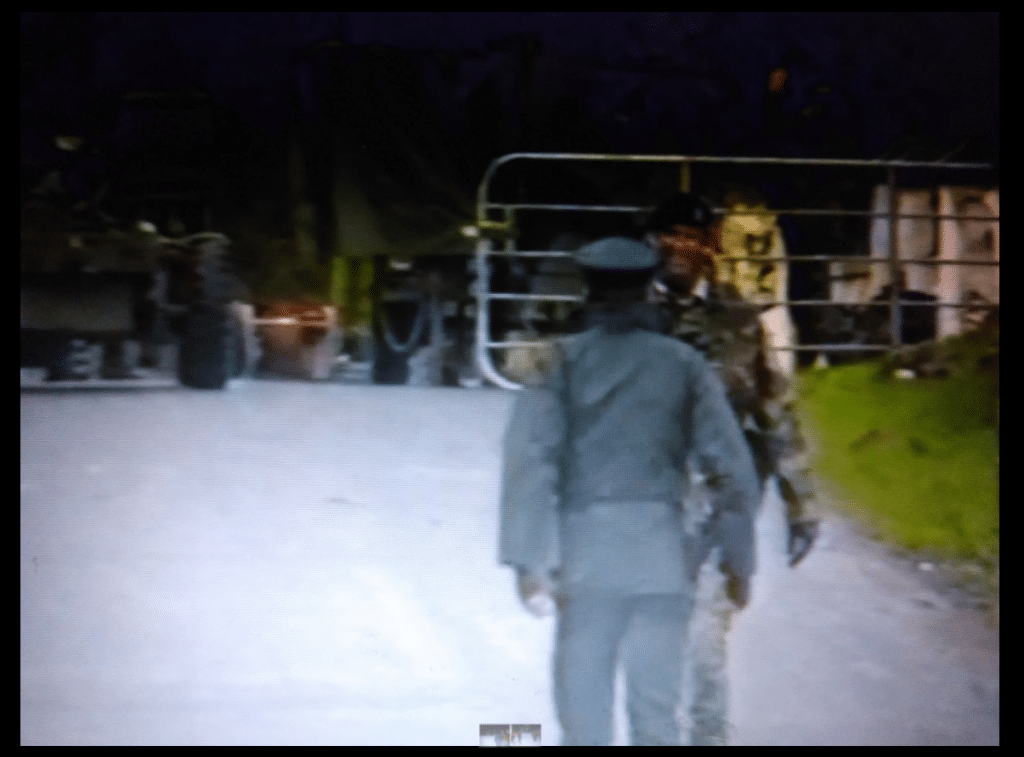

The two photographs above show the Royal Regiment of Fuseliers on the Edenappa Road just after the murders of Breen and Buchanan

An RAF helicopter flying equipment off Feede Mountain where troops were dug in to form an observation post over the Edenappa Road – Kilnasaggart Bridge area.

Frazer raised his concerns about Army activity at Smithwick when he gave evidence on Day 120 but didn’t get very far. He insisted there was a permanent camera on the road –
‘I know for a fact, for a fact, that road had a camera on it full-time, full-time on that road.
Q – By who?
A – By the Army. And the only place you couldn’t see was the place where they were shot… but the other thing was, I also spoke to the man that put an undercover camera on a stone and parked it there on that road.
Q – If I can move on now, because the Tribunal has heard extensive evidence in relation to army installations and Army analysis on that road’.
Frazer told Smithwick that he – Smithwick – was being manipulated by the British Security services, ‘I would love your honour to be sitting in Newtownhamilton and doing this inquiry, because I would guarantee that you would get at the truth. The problem is the British Government have not put all the facts in front of you’. Frazer realised too late that getting at the truth had never been the object of the exercise .
Update
Since that article was written, victim- survivors Stephen Travers and Des McAlea and relatives of the dead band members of the Miami showband have accepted compensation from the MOD and PSNI (13, December 2020) . The case therefore did not proceed.
The band were the victims of a murderous attack by a UVF/UDR gang near Banbridge in July 1975. Robin Jackson, the UVF ‘Commander’ in the area, was linked to one of the weapons used in the attack through forensic evidence on the hand gun silencer. He was acquitted in subsequent court proceedings.
A HET Report in 2011 re-investigating the Miami attack, found evidence that in 1975, a senior officer in the RUC had advised Jackson to ‘lie low’ during the police investigation.
Even if the recent civil case in Belfast had gone ahead it would have been conducted largely in secret as a ‘Closed Material Procedure’.
The secrecy surrounding civil proceedings in Legacy cases and the British Government’s determination to close down any avenues for criminal prosecution is part of the determination to gain control of the historical narrative of a dirty war.
With the death of RUC Commander, Chief Superintendent Harry Breen, in March 1989 in South Armagh, one of the most enigmatic but significant intelligence figures of that war died, along with his secrets.

Harry Breen seen here posing with captured weapons shortly after an IRA unit was wiped out at Loughgall. Breen apparently posed with the weapons on orders.

OTHER STORIES BY DEIRDRE YOUNG ON THIS WEBSITE
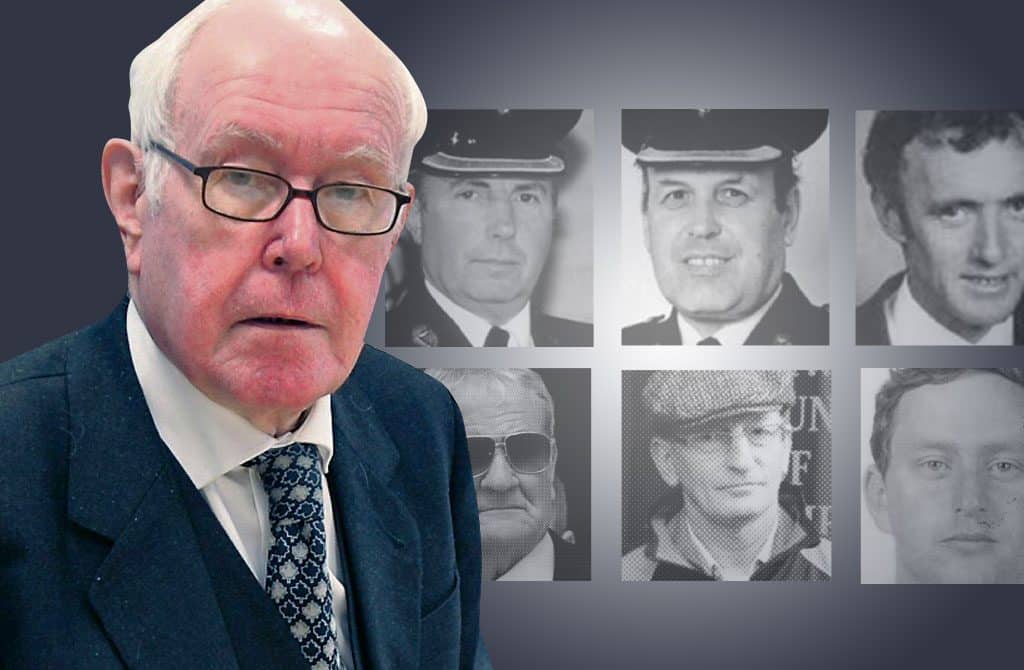
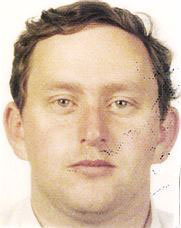
How Drew Harris diverted the Smithwick Tribunal.
